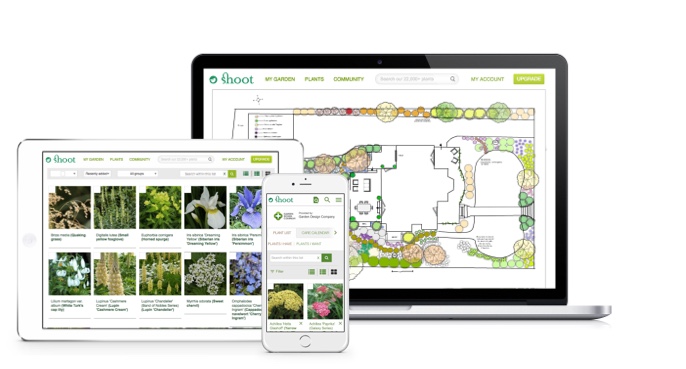Amelanchier canadensis (Serviceberry)
Other names: Shadblow serviceberry, Grape pear, Juneberry, Shadbush, Shadblow, Amelanchier botryapium, Amelanchier intermedia, Amelanchier oblongifolia
Species
A. canadensis is a dense, erect, suckering, deciduous shrub or small tree with oblong to elliptic, mid-green leaves, white-hairy when young and turning red and orange in autumn. Upright racemes of white flowers in spring are followed by blue-black fruit.
Season of interest
Flower | ||||
|---|---|---|---|---|
| Spring | Summer | Autumn | Winter | |
| Flower | ||||
Foliage | ||||
| Spring | Summer | Autumn | Winter | |
| Foliage | ||||
Height and spread
Height and spread | |||
|---|---|---|---|
| Size | Max height | Max spread | To maturity |
| 6 m | 3 m | 10-20 years | |
| 19 ft | 9 ft | 10-20 years | |
Where to grow
Check to see if this is the Right Plant, Right Place with ShootChecker™


/filters:strip_exif()/assets/plants/plant_4265/plant_4265_shoot_20220209010322.jpg)
/filters:strip_exif()/assets/plants/plant_4265/users/plant_4265_user_38982_20120116224538.jpg)
/filters:strip_exif()/assets/plants/plant_4265/users/plant_4265_user_55790_20130426212100.jpg)
/filters:strip_exif()/assets/plants/plant_4265/users/plant_4265_user_55790_20130426212210.jpg)
/filters:strip_exif()/assets/plants/plant_4265/users/plant_4265_user_55790_20130426212314.jpg)
/filters:strip_exif()/assets/plants/plant_4265/users/plant_4265_user_103234_20170711154033.jpg)
/filters:strip_exif()/assets/plants/plant_4265/users/plant_4265_user_116956_20190109151220.png)
/filters:strip_exif()/assets/plants/plant_4265/users/plant_4265_user_118624_20190323115250.jpg)
/filters:strip_exif()/assets/plants/plant_4265/users/plant_4265_user_103478_20190606150622.jpg)
/filters:strip_exif()/assets/plants/plant_4265/users/plant_4265_user_103478_20190606151804.jpeg)
/filters:strip_exif()/assets/plants/plant_4265/users/plant_4265_user_29859_20200306101512.jpg)
/filters:strip_exif()/assets/plants/plant_4265/users/plant_4265_user_132051_20210208105252.jpg)
/filters:strip_exif()/assets/plants/plant_4265/users/plant_4265_user_107177_20220713161331.jpeg)
/filters:strip_exif()/assets/v3/2023-10-02/5c1538ff-f23e-4725-9ada-ff195f7a1f51.jpg)
/filters:strip_exif()/assets/v3/2025-04-23/8f5d29b1-b41d-49bb-b9d2-0552abd18ec8.jpg)
/filters:strip_exif()/assets/plants/plant_4265/plant_4265_shoot_20220209010322.jpg)
/filters:strip_exif()/assets/plants/plant_4265/users/plant_4265_user_38982_20120116224538.jpg)
/filters:strip_exif()/assets/plants/plant_4265/users/plant_4265_user_55790_20130426212100.jpg)
/filters:strip_exif()/assets/plants/plant_4265/users/plant_4265_user_55790_20130426212210.jpg)
/filters:strip_exif()/assets/plants/plant_4265/users/plant_4265_user_55790_20130426212314.jpg)
/filters:strip_exif()/assets/plants/plant_4265/users/plant_4265_user_103234_20170711154033.jpg)
/filters:strip_exif()/assets/plants/plant_4265/users/plant_4265_user_116956_20190109151220.png)
/filters:strip_exif()/assets/plants/plant_4265/users/plant_4265_user_118624_20190323115250.jpg)
/filters:strip_exif()/assets/plants/plant_4265/users/plant_4265_user_103478_20190606150622.jpg)
/filters:strip_exif()/assets/plants/plant_4265/users/plant_4265_user_103478_20190606151804.jpeg)
/filters:strip_exif()/assets/plants/plant_4265/users/plant_4265_user_29859_20200306101512.jpg)
/filters:strip_exif()/assets/plants/plant_4265/users/plant_4265_user_132051_20210208105252.jpg)
/filters:strip_exif()/assets/plants/plant_4265/users/plant_4265_user_107177_20220713161331.jpeg)
/filters:strip_exif()/assets/v3/2023-10-02/5c1538ff-f23e-4725-9ada-ff195f7a1f51.jpg)
/filters:strip_exif()/assets/v3/2025-04-23/8f5d29b1-b41d-49bb-b9d2-0552abd18ec8.jpg)
/filters:strip_exif()/assets/users/user_31593/forum_11714_478_20120601094118.jpg)